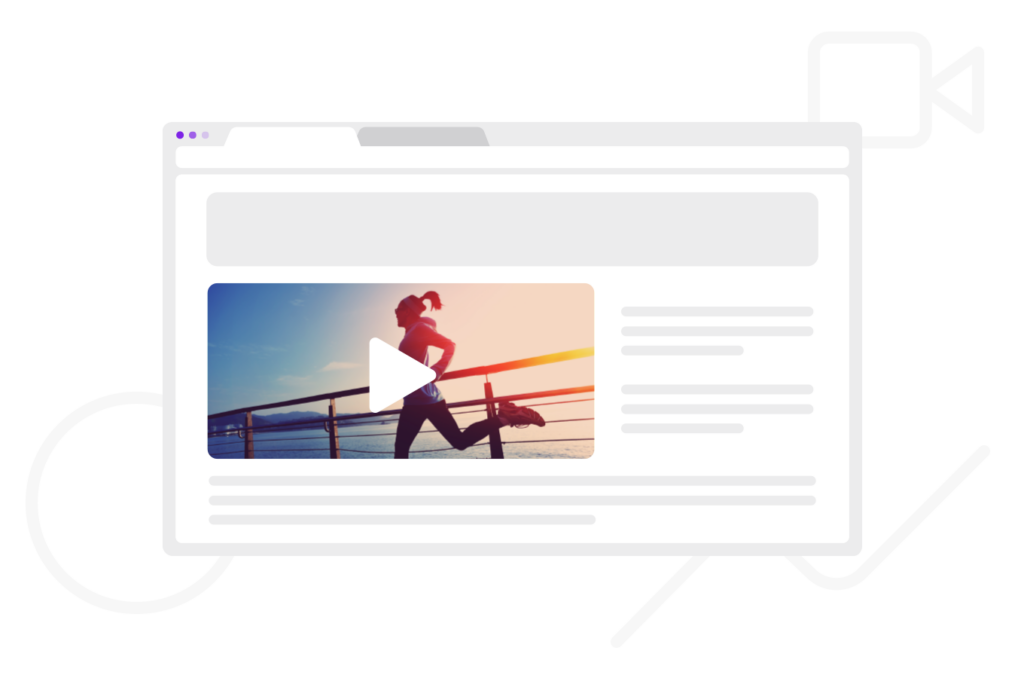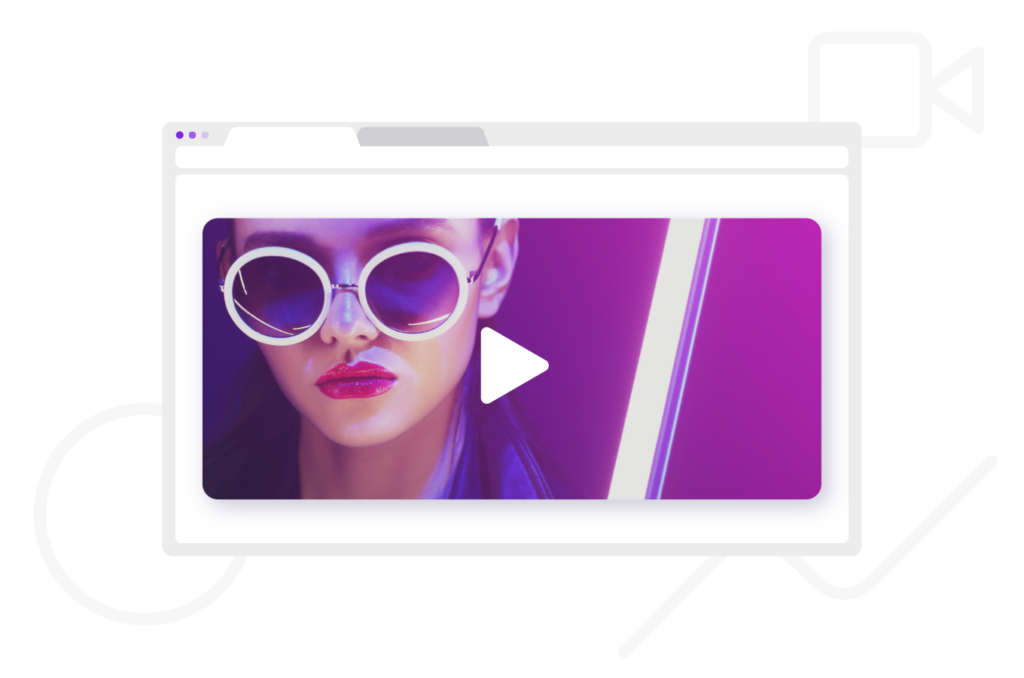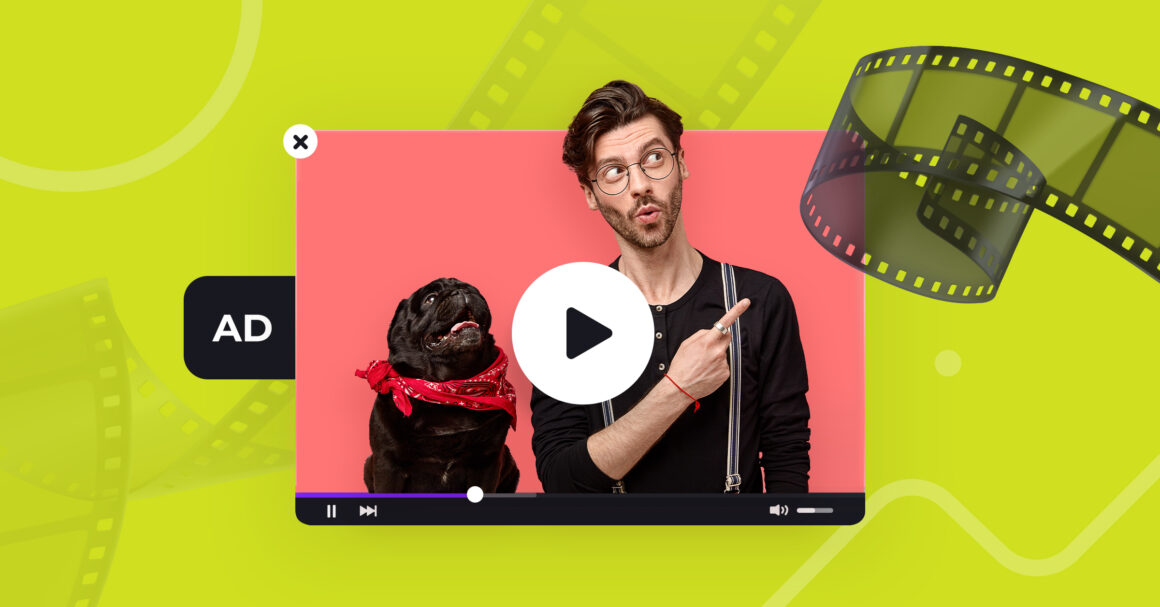You must have come across several native advertising examples while browsing different sites without even realizing it. If so, then native ads did their job perfectly well: they mimicked the editorial content and looked like an absolutely ‘native’ piece of content to all the other publications on the site.
Why Native?
Native advertising is on the rise these days simply because it differs so greatly from banner ads that already tired consumers’ eyes. Native ads boast of higher CTR as a result of higher ad viewability and higher user engagement. Those advertisements can easily become viral and shareable. This results in broadening the ad reach.
Besides, with programmatic buying platforms marketers can make native advertising campaigns work even more effectively by automating the process of buying ad placements. As a result, the ads will appear on even more relevant websites thus showing an increase in purchase rate.
Reach maximum effectiveness with outstream
Do you know what is also super-hot these days? Videos!
Videos are easy to follow and digest, can quickly engage, educate or entertain viewers depending on the goal. I’m pretty sure we all get stuck in the loop of watching YouTube or Buzzfeed videos without noticing how much time has passed.
Social media sites have invested heavily in encouraging native video content, and the stats speak for themselves. Native Instagram stories command a whopping 500 million video views every day. Not to mention Facebook, with over 8 billion video views per day. Clearly, video content attracts and keeps people’s attention.
According to the research done by Impact, people retain 95% of information seen in a video. Hubspot claims that 97% of marketers notice that videos help customers understand their product better. In such a way, video content improves brand awareness and increases conversion rate. Isn’t it what we all want?
Cisco Annual Internet report states that by 2021 over 80% of all traffic will consist of video. You see, the video time is now!
But what if we combine these two strong advertising elements together?
Native ads + videos = a perfect solution.
Video native advertising has become a powerful tool that has the best of both worlds.
What is Native Video Advertising?
Native videos, also known as outstream, are video ads that emerge outside of video players. Think of the last time you read an article on some popular site like The New York Times. You definitely encountered a large video player popping up out of nowhere.
Those videos are muted, usually contain captions and are played automatically. Once you interact with them, for example switch the sound on, they will continue playing. If you prefer to scroll down further, they get paused and disappear or shrink to a smaller video player hovering over your page.
Such videos don’t interrupt your viewing session and can add an additional value to the content on the website or serve as a subtle ad that doesn’t intervene with a reader’s experience. Such videos are relevant to the content or users’ needs, they convey a particular message about a product or service, and normally they employ compelling storytelling in order to get viewers’ attention.
These videos usually try to amuse, entertain, educate, and engage the audience by creating a certain experience. A great example of this type of content would be a short video clip about a 60-year-old gentleman who keeps himself active by using an indoor cycling bike. It may promote the online sports store, but delivered in an authentic way that feels nothing like advertising.
Outstream vs Instream. What is the difference?
You shouldn’t confuse native video ads with traditional instream video ad formats such as pre-rolls, mid-rolls, and post-rolls. The latter are videos that viewers have to watch before, in the middle, or after the video they were intended to watch in the first place. Instream ads are built into an existing video player. Think of social media networks like Facebook, Twitter or YouTube.
Pre-rolls proved to be highly inefficient since viewers get very annoyed having to sit through these types of ads.Two thirds of viewers prefer to skip such ads where possible. Around 30% of ad blockers are reported to be installed to skip annoying pre-rolls.
Outstream proves to be much more efficient: according to eMarketer 77% of agencies and 70% of advertisers prefer outstream ads. And looking at the current trends, that number will be growing even more.
I hope you got interested by now. In this case why not have a quick look at some successful examples of native video ads to be able to incorporate outstream in your advertising strategy?
Native video ads examples
 In-feed video ads
In-feed video ads

In-feed, or in-read video ads look like the most common and usual type of native advertising. In-feed outstream videos nonchalantly appear in the middle of editorial content surrounded by text smoothly blending in. They don’t interrupt the user experience, but at the same time can’t be left unnoticed.
 Overlay outstream ads
Overlay outstream ads

Overlay video ad functions as a traditional pre-roll except that it has a separate video player. Another video player simply appears on top of the video you intended to watch in the first place.
As for me, overlay outstream ads are pretty much as annoying as pre-rolls, however they have their benefits. Such overlays are way cheaper than pre-rolls and are actually easier to implement.
 Slider native video ads
Slider native video ads

They show up in a particular corner on the page. Sliders are very engaging and catch users’ attention like no other type of native video ads mentioned above. At the same time, this type of ads is more demanding as it needs to be of higher quality and must remain relevant to both a viewer and a website where it’s published.
Why are native video ads so powerful?
I’ve touched upon a few advantages of video native advertising earlier, but let’s have a closer look at their undeniable benefits:
- In-feed native videos are set to play only when they are 100% in-view. If a user scrolls, videos are paused and disappear unless a user scrolls back. In such a way, marketers only pay for the ad campaign that is actually viewed. Normally advertisers pay if the ads are viewed for 30 seconds and more;
- Native video ads help to tell your brand’s story in the shortest time. When having to choose between watching a video or reading a block of text, most Internet users are likely to go with the video content since it is perceived as less time consuming.
- Native video is the most engaging video format. It has the highest completion rate, most clicks and landing page views. Great native ads tell a story, they try to educate or entertain, and only subtly connect viewers with a brand. If people watch a video ad till the end, it means they are genuinely interested in the content. Thus, it’s a very natural but persuasive tool to demonstrate why your brand, product, or service are exceptional.
- Native video ads create memorable experiences. The combination of sound and motion can provoke an amazing purchasing driving force. Our brain is designed to be triggered by emotions when we are shopping. By creating that experience you connect your brand with certain feelings and a particular message. That really helps to stand out and create a certain image audience will associate your brand with.
- While pre-rolls are usually limited to 30 seconds, native videos don’t have such restrictions. You can have more valuable seconds to interact with users, tell your story, share your message in a more unusual and notable way.
- Outstream ads are better optimized for mobile devices compared to instream video ads;
- Outstream ads don’t require built-in video player making it possible to advertise with any publishers;
- Native videos ads have a reputation of minimum ad fraud because the videos are activated when they register a particular user action;
What about cons?
- To create a truly amazing video ad experience you will have to invest a considerable amount of time, effort, and money. Let’s face it, video native advertising sets a high standard straight away;
- It’s a relatively new ad format, so there’s still not much data or best practices to learn from;
- Not all video players offer muted autoplay;
- Some types of outstream ads like overplay and slider are still pretty much intrusive and can’t be considered pure native advertising.
Tracking of native video ads
Now that you now all about these type of advertising, you are (or should) be wondering, how to track such ads. The answer is: in the same way as any other ads. You put your campaign link in the video and then direct to landing or offer pages. Thanks to an ad tracker like Voluum you can now, what kind of audience engages with a given type of native video ad more.
If you would like to know more, sign up for demo or buy Voluum now!




